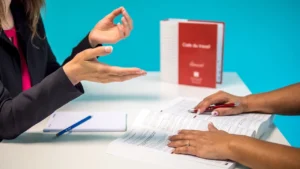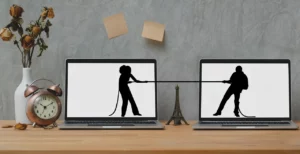Many lawyers have a difficult time not only in acquiring clients but also in keeping clients or achieving client referrals. Many times, this is the case despite the quality of the work, the speed produced or even the price charged. One large reason for this comes as a result of a lack of “bedside manner” — a term typically used for doctors and patients but extremely applicable in the legal industry.
Bedside manner refers to the manner in which a doctor explains advice and consequences to a patient at their bedside. While I have not gone to medical school to know where or when this is taught, what I do know is that bedside manner is certainly not taught in law school and, in some cases, not even picked up during a lawyer’s working experience. Note that this does not just relate to doctor-patient or lawyer-client but to any service industry. I have met many senior lawyers with poor bedside manner who face negative client feedback when explaining the results of cases, legal processes or even basic will drafting. Not only does a lack of bedside manner deter clients, but it can sometimes even lead to unnecessary client complaints. While many lawyers make up for this deficiency with further correspondence and written memos to justify their actions, this often is a poor substitute for proper bedside manner.
Bedside manner, in the case of a lawyer-client relationship, is a set of mannerisms to explain to a layperson their rights and options even in the face of bad news; however, it can be difficult to teach these mannerisms to a young associate, even those willing to learn. Having said that, here are a number of principles that may be used to assist in teaching proper bedside manner.
The first principle is what I like to call “mirroring.” In my experience, generally, people tend to enjoy speaking to others who are common in their mannerisms. As a result, they seem to “hit it off” with lawyers who mirror their personalities. For example, a client who is speaking in a lower volume and is more timid is more likely to be attracted to a person who also speaks in a more relaxed manner than one who is loud and boisterous.
Personality traits and tone are one part but the same goes for perspectives: religious, liberal, conservative, pet-lovers, travellers, etc. It’s important to understand that mirroring does not mean lying or acting against the authentic version of yourself; it simply means to emphasize various aspects of your personality to match the person sitting in front of you during the conversation. This will make the client feel more connected to the lawyer they are supposed to trust to take care of them; it will also increase your empathy for the client whose views you may ultimately disagree with. So, mirroring involves not just the manner with which you speak (tone, volume, body language) but also viewpoints and perspectives.
The second principle is related to the language that is being used, specifically as it relates to a lawyer speaking English to an English-speaking client. From a linguistic point of view, lawyers are taught to speak and draft in legal jargon and unfortunately take for granted that a layperson does not understand this. There are many books and articles written about the need for a lawyer to speak plain English to their clients and this is good advice and a good starting point. But to take it a step further: plain English is not only the lack of legal jargon as it relates to bedside manner. Plain English also means speaking a style of English that the other person understands. Some clients expect a lawyer to speak formally, others to speak casually, and some have to speak louder for those who are hard of hearing or briefer if there is a small language barrier. The point here is that accomplishing bedside manner involves speaking differently depending on the audience member in front of you.
The counterargument to mirroring or customizing plain English based on a lawyer’s measure of the person in front of them would be: does this not lend itself to biases in judgment? For example, speaking loudly to an older client immediately lends itself to an implicit bias that an older client is hard of hearing when, in fact, the client may have better hearing than the lawyer who is speaking. But the fact is we make judgment calls every day for every decision we make based on the information we have in front of us: from what to wear based on the weather to where to drive based on traffic. The point is to make an initial judgment call and adjust accordingly to the information that reveals itself in the few minutes or seconds we have with the person in front of us. This is also why in-person meetings and phone calls will always be more advantageous than emails and letters because, in the former case, lawyers can better judge which words or mannerisms to use and customize based on the audience they are speaking to.
You will notice that the first two principles of mirroring and language have nothing to do with legal knowledge or what is being said — only “how” it is being said. The last principle relating to bedside manner is relating the actual content of what is being said and that is to provide solutions. Most often, clients approach a lawyer asking for advice on a topic — if they can sue, buy a company, make a will, go through probate, buy a house, etc. Sometimes, this is simple to accomplish. But oftentimes, there is a point in the conversation with the client (many times even at the first consultation, but it could take place much later) where the client wants to accomplish a goal by having the lawyer perform a certain action for them that legally cannot be done. As a result, most lawyers will simply say they cannot assist and the client moves on to another lawyer who can. This last principle is related to providing some sort of solution — another option, another method, an introduction to someone else — anything that can assist in accomplishing the client’s goal. Even if you are not hired, the client will remember the service that was provided (an attempt at a solution) and will return in the future.
There are many other smaller components to a lawyer’s bedside manner (for example: returning calls or emails in a timely manner) and for want of space, it is difficult to list them all. Suffice it to say that to improve one’s bedside manner, the best way to go about it would be to attend as many meetings as possible between a senior lawyer (or any consultant) with known exceptional bedside manner and make notes as one could in understanding any other legal knowledge. Failing that, the mirroring of personality, speaking in plain English customized to the client audience and provision of solutions are most important in providing quality service to the client that should form part of the law firm experience.
In a time when technology and remote work environments are prevalent, lawyers can best differentiate themselves by learning proper bedside manner to provide the best value to clients.
This article was originally published by Law360 Canada, part of LexisNexis Canada Inc.




